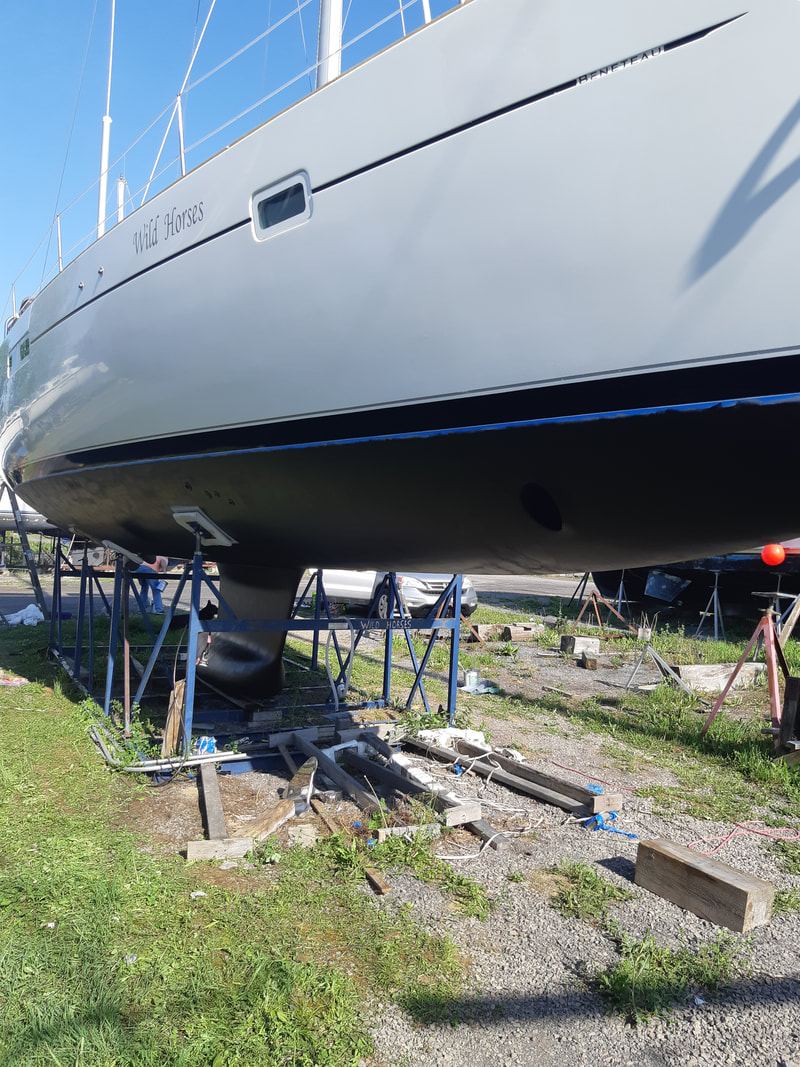Project: Changing Antifouling Bottom Paint from VC-17 to Micron CSC
VC-17 is great for fresh water but since Wild Horses will be spending her full-time future in salt water, she needs an antifouling paint that is less ablative than VC-17. We DO NOT want to be in the business of hauling the boat out of the water every 3 or 4 months to apply new antifouling.
Hence, “change antifouling pain to something saltwater friendly” got put on our projects list.
Note to anyone thinking that this is a fun weekend project. It is not. It is not quick, easy and is nowhere near fun. But getting some tips on what to do and what not to do, helps. Here is our experience.
The major steps, in a nutshell…
Crap, that sounds too easy. Let’s unpack it a little.
Removing the VC-17
Sandblaster or DIY? We went with DIY to keep the project within our budget and to control our schedule.
Hence, “change antifouling pain to something saltwater friendly” got put on our projects list.
Note to anyone thinking that this is a fun weekend project. It is not. It is not quick, easy and is nowhere near fun. But getting some tips on what to do and what not to do, helps. Here is our experience.
The major steps, in a nutshell…
- Remove all VC-17
- Apply a new coat of epoxy
- Apply new coats of antifouling paint
Crap, that sounds too easy. Let’s unpack it a little.
Removing the VC-17
Sandblaster or DIY? We went with DIY to keep the project within our budget and to control our schedule.
|
Applying epoxy and antifouling
- It is critical to start with a good base. By removing the VC-17 ourselves, we could see that our hull was near perfect. No cracks and no signs of osmosis (gelcoat blisters) or other fibreglass failures. We also were able to ensure that we removed very little of the existing epoxy coats on the boat.
- Even though the existing epoxy coats were maintained, we still needed to apply one additional coat of epoxy. Interprotect guidelines recommends applying your first coat of Micron CSC to the hull when the epoxy layer is still tacky. This ensures that the antifouling paint is bonded to the epoxy and won’t peel off.
- Of course, the boat in her cradle is supported by boat pads, the hull under which also needed to be epoxied and painted. We solved this by completing all epoxy and painting coats for the rest of the boat first. We then attached jack stands to the hull so we could lower the cradle pads. Being cautious, we only lowered half the pads at a time. This increased our painting time but, more importantly, decreased our stress that the boat would move in its cradle.
- We applied three coats of antifouling paint using black, then red, then black. Every other coat added in the future will be black. The idea being that the red coat will serve as our “hey, you need to add antifouling paint” notification.
Your browser does not support viewing this document. Click here to download the document.







